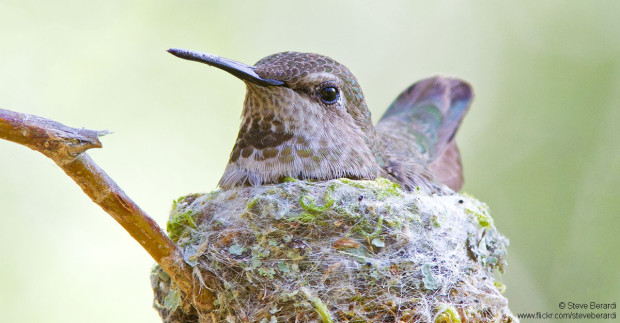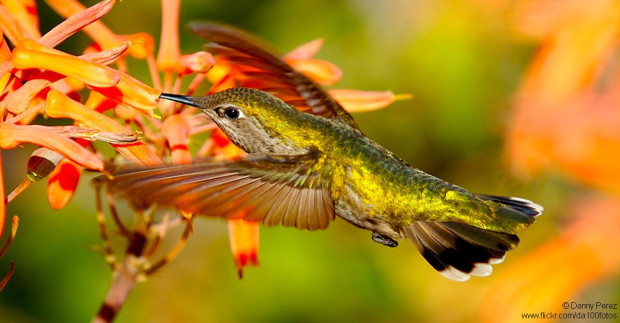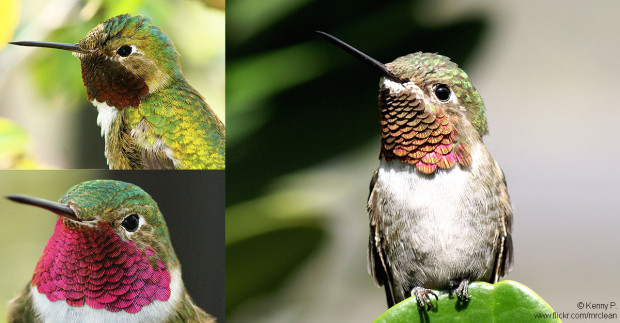We have much more to do and your continued support is needed now more than ever.
Ten Amazing Things About the World’s Tiniest Backyard Birds
 Hummingbirds are a definite favorite for so many North American wildlife gardeners, and after you voted last month these tiny wonders have a special place of honor during our Garden for Wildlife Month. There are eight species of hummingbirds that nest in the U.S. and about two dozen who live here or visit. For those in the eastern half of America, the Ruby Throat is what you will see. The West, particularly the Southwest, has many more species. Here are ten things about hummingbirds that are truly awesome.
Hummingbirds are a definite favorite for so many North American wildlife gardeners, and after you voted last month these tiny wonders have a special place of honor during our Garden for Wildlife Month. There are eight species of hummingbirds that nest in the U.S. and about two dozen who live here or visit. For those in the eastern half of America, the Ruby Throat is what you will see. The West, particularly the Southwest, has many more species. Here are ten things about hummingbirds that are truly awesome.
1. Lightweights
The average Ruby-Throated Hummingbird weighs about 3 grams which is roughly the same as a penny. The Bee Hummingbird of Cuba is the smallest bird in the world and only measures in at around 2 inches and 1.5 grams. Hard to believe they are in the same family as the huge African Ostrich! My inner nerd calculated that it would take 30,000 Bee Hummingbirds to match a grown Ostrich’s weight.
2. Speedsters
Hummingbirds are small but they have blinding speed. Their wings flap 50 to 200 times per second. This is faster than any other bird species and, like most species, they speed up during times of courtship. Hummingbirds can fly 30 MPH in a straight line and dive bomb intruders at about 60 MPH.
3. World Travelers
The Rufous Hummingbird wins the distance competition with the longest migration of any hummingbird species at more than 3,000 miles from nesting grounds in Alaska and Canada to winter habitats in Mexico. Many Ruby-Throats make a 2,000 mile journey to Central America including, for some, an astounding 500 mile non-stop flight over the Gulf of Mexico

4. Aerial Acrobats
Watching a hummingbird in flight is an incredible treat. They are masters of amazingly quick starts and stops in any direction. Hummingbirds can even fly short distances upside down, a maneuver they often employ when being attacked by another bird. Their wings sweep in a figure 8 motion (shown in slow motion) while flying.
5. Tiny But Tough
These tiny little birds establish territories and will fight to keep others away. Hummingbirds will sometimes attack larger birds — even hawks or crows! And they are oh so bossy. Hummingbirds and make deep-throated guttural sounds mixed in with mouse-like chirps, squeaks and twitters.
6. Micro Parents
As “micro” birds, they use micro fibers in nesting. They make their nests from plant fibers, plant down, delicate mosses and even spider webs. Hummingbirds also lay the smallest eggs of all birds. They measure less than 1/2 inch long.

7. Brainiacs
A hummingbird’s brain is 4 percent of its body weight, but is proportionately the largest in the bird kingdom. Hummers have terrific memories and can remember where they found food from the previous year.
8. Fast Lane Livers
Hummingbirds are metabolic race cars. A hummingbird’s heart beats up to 1,260 times per minute and they take 250 breaths per minute.
9. Hungry, Oh So Hungry!
Hummingbirds eat every 10 minutes or so throughout the day. They are such active eaters that one may visit as many as 1,000 flowers daily. A hummingbird must consume approximately 1/2 of its weight in sugar daily. In some circumstances, a “hummer” can starve to death in a couple of hours. To make it through the night, they go into a suspended state called torpor – a state in which their metabolic rate is only one-fifteenth that of normal sleep.

10. Living Color
A hummingbird’s color does not really come from pigment. Instead it comes from iridescent qualities in its feathers. The light is reflected and a hummer’s bright colors wink on and off, depending on the light source and the angle of the observer. This allows birds to flash colors when it wants to show off or hide them.





















